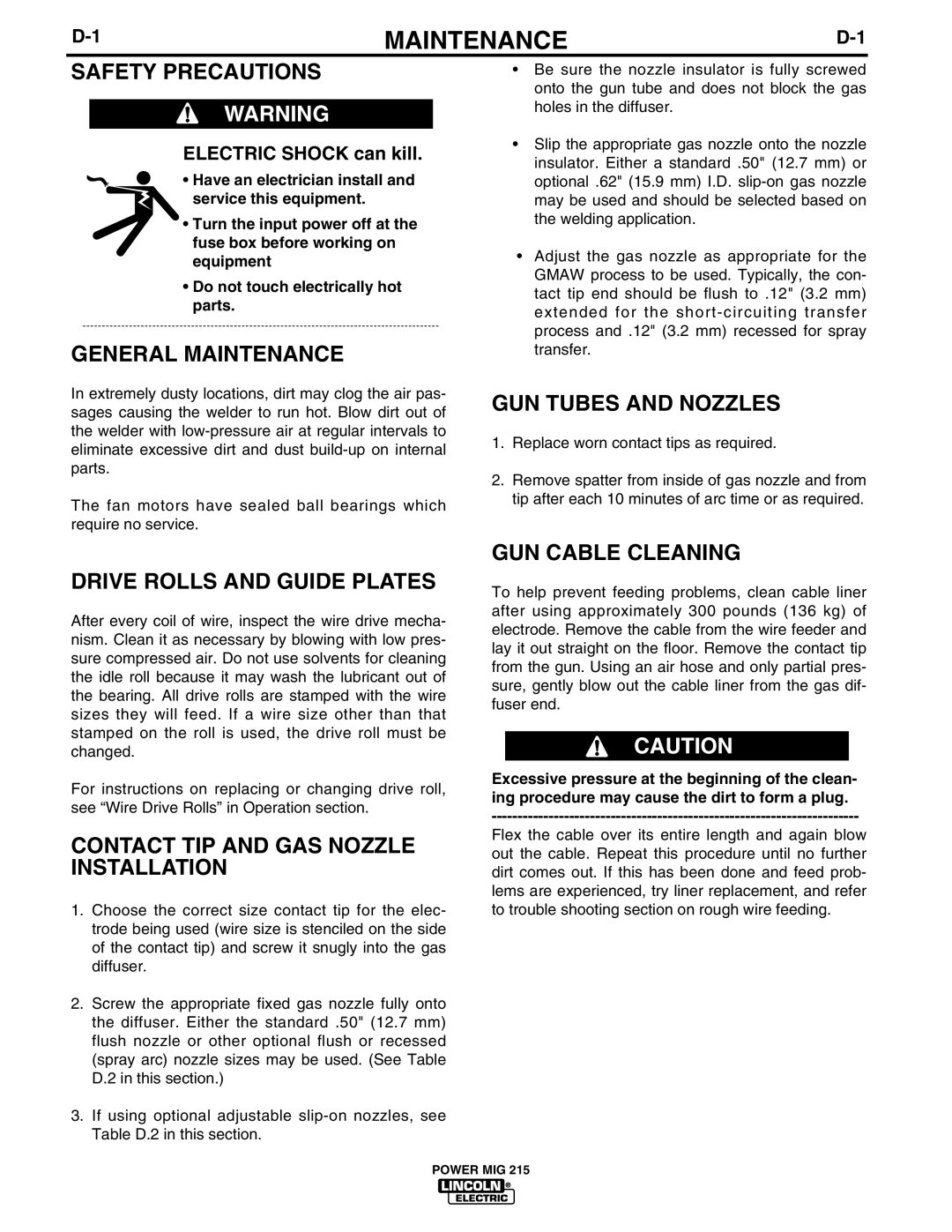pmn specifications
Lincoln Electric is a prominent name in the world of welding and cutting solutions, and its PMN (Precision Manufacturing Network) division is a testament to the company's commitment to innovation and quality in manufacturing processes. The PMN is designed to provide high-performance solutions for diverse industrial applications, focusing on precision, productivity, and advanced technology.One of the main features of the Lincoln Electric PMN is its integrated approach to manufacturing, which combines traditional fabrication techniques with cutting-edge automation. This enables the PMN to produce high-quality parts with improved accuracy and efficiency. The use of advanced robotics and automation systems allows for minimal human intervention, reducing the risk of errors and enhancing the overall reliability of the production process.
Another significant characteristic of the PMN is its dedication to lean manufacturing principles. By streamlining workflows and minimizing waste, Lincoln Electric ensures that production times are reduced while maintaining high quality. This lean approach not only enhances productivity but also reduces costs, allowing businesses to achieve better profit margins.
The PMN also focuses on the integration of advanced technologies such as artificial intelligence and machine learning in its manufacturing processes. These technologies enable the prediction of maintenance needs and optimization of operating parameters, leading to enhanced equipment longevity and reduced downtime. The data analysis capabilities provided by AI tools help in refining processes and improving product quality consistently.
In terms of product offerings, the Lincoln Electric PMN specializes in custom manufacturing solutions tailored to meet specific client requirements. This adaptability makes it suitable for various industries, including automotive, aerospace, and energy. The PMN is equipped to handle complex projects, providing seamless integration from design and prototyping to final production.
Furthermore, Lincoln Electric's commitment to sustainability is evident in the PMN's practices. The emphasis on energy-efficient processes and the use of recyclable materials underlines the company's goal of reducing the environmental footprint while delivering top-notch manufacturing services.
In summary, Lincoln Electric's Precision Manufacturing Network represents the confluence of tradition and technology. Its focus on precision manufacturing, lean principles, automation, and sustainability ensures that it remains a leader in the competitive landscape of manufacturing solutions. The PMN stands out as a model for efficiency and innovation, catering to a wide array of industrial needs.

